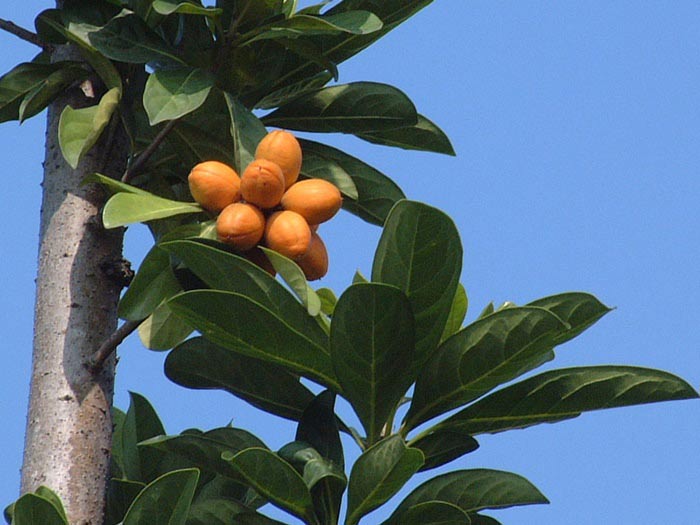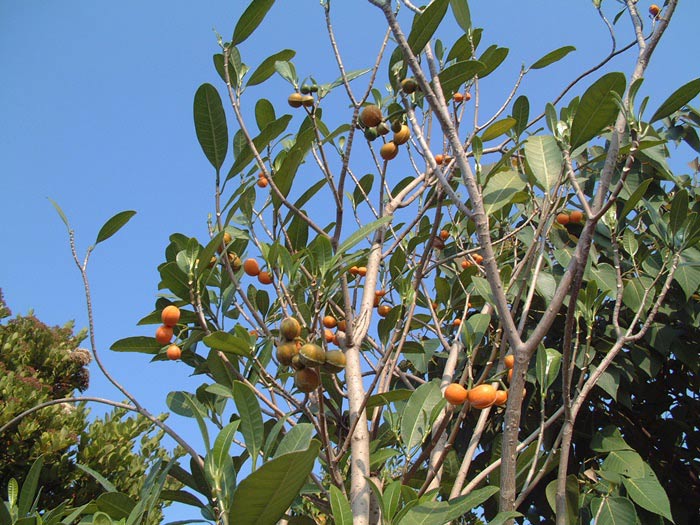Tabernaemontana subglobosa
The Lanyu tabernaemontana grows on Orchid Island and holds a sacred status among the local indigenous people. For the Tao people, it is believed to possess extraordinary power to ward off evil spirits and diseases. When tribe members are afflicted by illness, they perform specific rituals using the branches, leaves, or the scent emitted by the tree to dispel the evil spirits believed to be the cause of the disease, praying for the sick to recover smoothly. It is an important guardian of the Tao people's traditional beliefs and daily life.
The Lanyu tabernaemontana is an evergreen small tree or shrub with lush green leaves and delicate flowers.
Taro is an important staple crop for the Tao people. If taro fields are hit by severe pests or diseases, it directly affects the livelihood of the tribe. At this time, the Lanyu tabernaemontana is entrusted with an important mission, hoping to utilize its sacred power to perform traditional exorcism rituals. They mobilize men, wearing rattan hats, dressed in rattan armor, holding branches of the Lanyu tabernaemontana and the poisonous wood nettle, to drive the evil spirits causing the pests and diseases into the sea, protecting the precious taro fields and ensuring the food supply of the tribe.
The fruits of the Lanyu tabernaemontana often grow in pairs, with two oval follicles growing side by side. When ripe, they curve outward, resembling a smile, and reveal the red seeds inside. Due to their vibrant color and unique shape, they are considered to have ornamental value and are used as floral materials in flower arrangements.
The Lanyu tabernaemontana is distributed in the Philippines and Taiwan, with its primary distribution in Taiwan being along the coastal areas of Orchid Island, including coastal shrublands and slopes near the sea. It is currently used as an ornamental plant in gardens, for potted plants, hedges, and other applications. However, it is in the Apocynaceae family. The whole plant is poisonous and should not be ingested.

